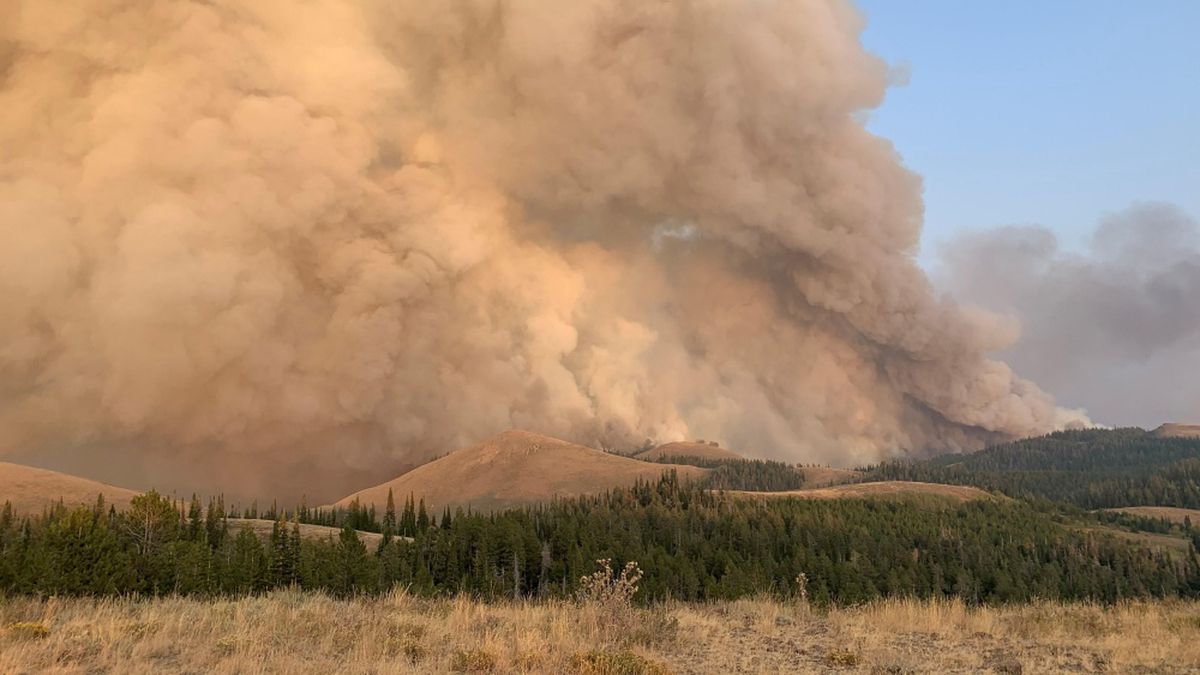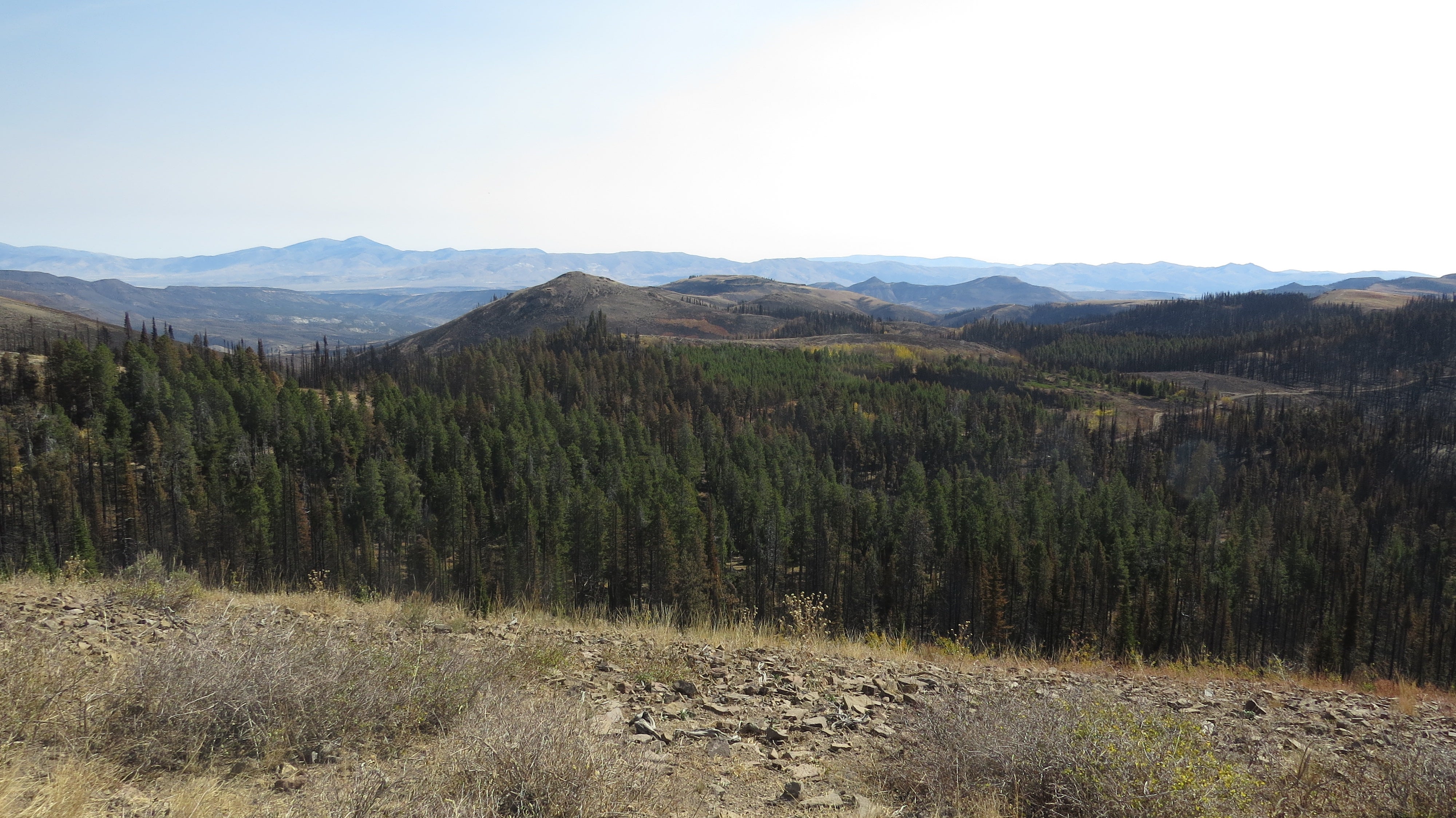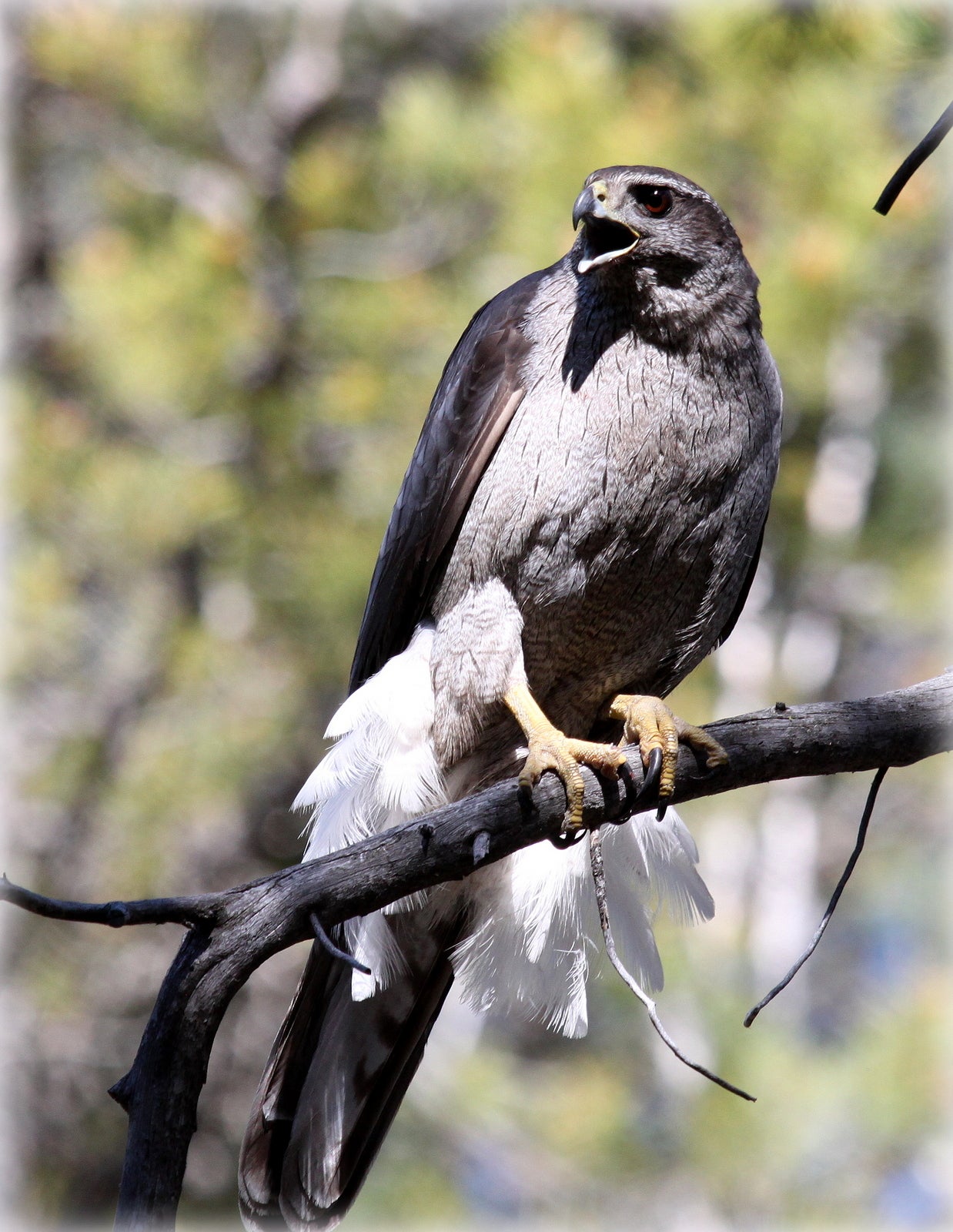By: Rob Miller
It is built into our human psyche to fear fire and to naturally think that fire on the landscape is bad. However, many of our Idaho forest landscapes are “fire dependent” including ponderosa pine, lodgepole pine, and aspen. All three of these forest species receive a boost after wildfire. Thus, not all fire is bad. However, even with this knowledge, it can be difficult to watch the forest burn. On the afternoon of September 12th, the Badger Fire ignited in the South Hills of the Sawtooth National Forest.

This tested the collective psyche of the IBO team as the fire threatened our core goshawk project study area and habitat for the only endemic bird species to Idaho, the Cassia Crossbill.
The fire quickly raged beyond control, doubling in size most every day until reaching an amazing 90,000 acres.
The fire perimeter encompassed 25% of our goshawk territories in the South Hills and nearly a third of all Cassia Crossbill habitat. The impact on the population of these two species was initially speculated to last decades.

However, the news might not be as bleak as we had originally believed. The goshawks and crossbills are both dependent upon lodgepole pine forests in that area. The fire burned most intensely in sub-alpine fir, juniper, and sagebrush. Bad news for Greater Sage-grouse and a multitude of other species, but not as bad for goshawks and crossbills. The best goshawk and crossbill habitat within the fire boundary, didn’t actually burn. From a goshawk perspective, we probably only lost 4 instead of 8 territories, none of which were among the most productive territories in the area. Some of these territories were probably improved for use by goshawks. The impact on crossbills will be significant, but we didn’t lose as much habitat as we had thought. The impact on Greater Sage-grouse in the area will be significant with multiple breeding leks destroyed.
Only time will tell, which is where we come in.
IBO Team Goshawk has studied goshawks in the area continuously over the past ten years, and less regularly extending back into the 1990’s. We are well positioned to look at the pre- and post- fire trends in the area, and to better understand how goshawks adapt to rapidly changing landscapes as a result of fire.

We are already planning our project modifications for next season. We’ve deployed purple color bands (for easy re-sighting and identification without re-trapping the birds) on two of the breeding females we believe will be displaced by the fire, and two other birds who breed adjacent to the fire. We’re very interested to see where we find these females breeding next year. We are planning to launch at least one if not two student research projects focused on these important fire questions next season. While it is still a sad situation, we plan to make the best of it.
This article is part of our 2020 end of the year newsletter! View the full newsletter here, or click “older posts” to read the next article.
Make sure you don’t miss out! Sign up to get our annual email update.